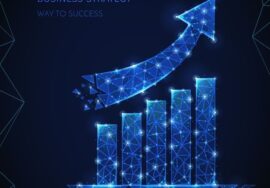A Look Into The Future: How Machine Learning is Changing Education
[ad_1]
Whether you like it or not, Artificial intelligence (AI) and its subcategory Machine learning (ML), are already an important part of our everyday lives. From using Google maps, navigating social media or even passing an exam at university, ML is changing how we learn, communicate and do business. But what is ML exactly and should we be worried or optimistic about the future? In this article we err on the side of optimism and explore in detail the impact ML is having on education, and where things might be heading in the future.
What is Machine Learning
To comprehend what Machine learning actually is, we first need to understand the broader category of artificial intelligence. Generally speaking, AI enables computers to perform tasks normally restricted to humans. Some examples of this would be asking Siri to call your friend Andrew, using Google maps to find a restaurant or asking Alexa to play your favorite Celine Dion track (We aren’t judging).
In a nutshell, If AI is what a computer uses to perform like a human, ML is how a computer develops this ability. It gets more complicated the more you look into it, but for our purposes all we need to know is that machines are learning to do the work people would normally have to do, which should ultimately make our lives easier.
You can find a more in-depth explanation of how ML works here
Machine Learning in Everyday Life
Let’s take a closer look at two examples of how AI and ML are being used in our daily lives.
Google maps. Google maps combines ML with a number of different data sources such as local government data, historical traffic patterns, feedback from users and aggregate location data to predict traffic conditions and decide on the appropriate route to take to avoid being stuck in traffic.
Uber. Uber uses ML to predict what time you’ll arrive at a given destination, what the traffic conditions are likely to be and the best routes to take. Additionally it’s used for marketing and distribution, driver onboarding processes and for its customer support systems.
Machine Learning in Education
Adaptive learning. Adaptive learning is the process of using ML and AI to develop personalized learning strategies to improve coursework, grades, teaching methodology and student progression. Adaptive learning software like Prodigy classK12 and OLI is being used to personalize the education process by adapting the learning path of a given student in real time.
It’s even possible for AI to act as assignment writers with apps like Jarvis using ML to write essays, blog posts, and web copy. Data from these apps can be used to further alter the teacher’s approach, to highlight students who need more time on a certain topic, or those who would benefit from a different style of teaching. Additionally, students can use this information to modify their personal learning strategies. Some benefits of adaptive learning can include:
- Students can identify their weaknesses
- Ability to work at their own pace
- Boosts student satisfaction and engagement
- Cheaper than expensive textbooks
- Provides important information on student progression
- Enables a more structured support system for students
- Teachers can constantly improve and personalise their approach
- Develop more efficient grading systems
- Digital examinations
Learning Analytics
Using advanced software, learning analytics allows teachers to utilize data to help them teach more effectively, while also fine tuning how the students learn. Teachers can collect various types of data on the performance, progress, learning style and student development. Then they use this data to adapt their teaching practices and make better institutional decisions. Some benefits of learning analytics can include:
- Measurement of key performance indicators
- Easy access to multiple data points
- Supports student development
- Helps to develop institutional strategies
- Easily implemented via software
- Cost effective
Apps Using ML in Education
There are plenty of new and emerging applications for use within the education sector. From basic plagiarism checkers to fully fledged platforms using data analytics and ML. Below are a few examples of different apps currently being used in education.
- Jigsaw – Offers an ML platform as well as an array of different learning programs for education professionals
- Brainly – An education app and a peer-to-peer platform for teachers, students and parents. It encourages engagement in its online community
- iTalk2Learn – An open-source tutoring platform for mathematics
- Nagarro- a ML platform with data analytics and integration functionalities
As we’ve seen, ML is already making a huge impact in the education sector. Whether it’s making the learning process easier for students, or allowing teachers to develop better strategies. AI and ML have almost limitless potential to increase efficiency, develop personalized education strategies, measure performance indicators and boost student satisfaction. The prominence of these platforms within education is ever-increasing. Classrooms as we know them may become a thing of the past, making way for new forms of education that will ultimately change the way we learn for the better.
Author’s BIO: Stella Gary is an entrepreneur and blog writer working within the tech/education sector. She has written extensively on different topics ranging from AI to standardized testing in schools.
[ad_2]
Source link










